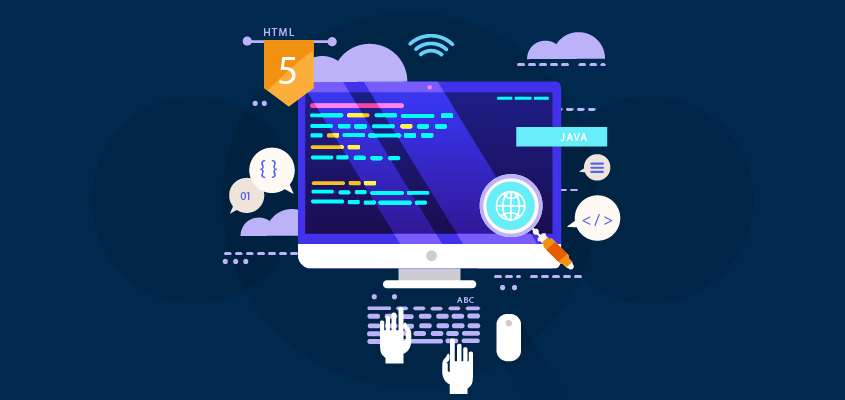Welcome to the fascinating world of web programming! In an era where everything is just a click away, understanding web programming is more important than ever. It’s not just about writing code; it’s about creating experiences that connect people, businesses, and ideas. Let’s dive into the essentials of web programming and discover how it shapes our digital landscape.
What is Web Programming?
At its core, web programming refers to the process of writing code that enables websites and applications to function properly. It encompasses a range of activities from building simple static pages to complex interactive applications. While many use the terms “web programming” and “web development” interchangeably, there’s a subtle difference. Web development is a broader term that includes not just programming but also design, content creation, and server management.
The Web Programming Process
Planning and Design
Before any code is written, planning is crucial. This phase involves brainstorming ideas, defining goals, and sketching out wireframes. A well-thought-out design ensures a smooth user experience (UX), which is essential for keeping visitors engaged.
Coding and Development
Once the design is set, it’s time to roll up your sleeves and start coding! This is where the magic happens. Front-end programming focuses on what users see—the layout, colors, fonts, and interactivity. Languages like HTML, CSS, and JavaScript are key players here. Back-end programming, on the other hand, involves server-side logic that powers the application behind the scenes. Languages such as PHP, Python, and Ruby are commonly used to handle database interactions, user authentication, and more.
Key Technologies in Web Programming
Understanding key technologies is essential for any aspiring web programmer.
HTML, CSS, JavaScript: The Trifecta of Front-end Development
- HTML (HyperText Markup Language) structures content on the web.
- CSS (Cascading Style Sheets) styles that content—think colors, layouts, and fonts.
- JavaScript adds interactivity—animations, form validations, dynamic content updates.
These three languages form the backbone of front-end development.
PHP, Python, Ruby: Popular Back-end Languages
On the server side, languages like PHP are widely used for dynamic website content generation. Python has gained popularity due to its readability and versatility in handling various tasks. Ruby, particularly with the Ruby on Rails framework, offers a robust environment for building web applications quickly.
The Role of BPO Services in Web Programming
In today’s fast-paced environment, many companies opt for BPO (Business Process Outsourcing) Services to streamline their operations.
What are BPO Services?
BPO services involve delegating specific business functions to third-party providers. This can include customer support, data entry, or even aspects of web development.
How BPO Services Can Enhance Web Development Projects
By outsourcing certain tasks related to web programming—like testing or maintenance—companies can focus on their core competencies while ensuring high-quality deliverables.
Best Practices in Web Programming
To excel in web programming, adhering to best practices is vital.
Importance of Clean Code and Documentation
Writing clean code not only makes collaboration easier but also simplifies future updates or debugging tasks. Comprehensive documentation ensures that everyone involved understands the project’s structure and functionality.
Responsive Design: Adapting to Various Devices
With users accessing websites from various devices—desktops, tablets, smartphones—responsive design has become non-negotiable. It ensures that your site looks great on any screen size.
Common Challenges in Web Programming
Even seasoned developers face challenges in this field.
Dealing with Browser Compatibility Issues
Different browsers interpret code differently. Ensuring your website functions seamlessly across all platforms can be tricky but is essential for user satisfaction.
Managing Project Timelines and Client Expectations
Balancing deadlines while delivering quality work can be stressful. Clear communication with clients about what’s possible within given timeframes helps manage expectations effectively.
Future Trends in Web Programming
The landscape of web programming is continuously evolving.
Rise of Low-Code/No-Code Platforms
These platforms empower individuals without coding knowledge to create functional websites quickly. This democratization could change how we think about web development.
The Growing Importance of Cybersecurity in Web Development
As cyber threats increase, integrating security measures into every stage of development becomes crucial. Developers must prioritize secure coding practices to protect user data.
Conclusion
Web programming is more than just a technical skill; it’s about creating meaningful connections through digital experiences. As technology continues to evolve, so do the opportunities within this field. Whether you’re looking to start your journey or enhance your skills further with “Minds On” in the US, now is an exciting time to dive into web programming! Embrace the challenge; your future self will thank you!


